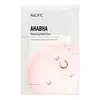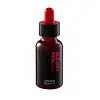What's inside
What's inside
 Key Ingredients
Key Ingredients

 Benefits
Benefits

 Concerns
Concerns

 Ingredients Side-by-side
Ingredients Side-by-side

Water
Skin ConditioningGlycerin
HumectantPropanediol
SolventIsopentyldiol
Humectant1,2-Hexanediol
Skin ConditioningBetaine
HumectantArginine
MaskingAllantoin
Skin ConditioningPolyglyceryl-10 Laurate
Skin ConditioningCarbomer
Emulsion StabilisingEthylhexylglycerin
Skin ConditioningGlyceryl Acrylate/Acrylic Acid Copolymer
HumectantDisodium EDTA
Dipotassium Glycyrrhizate
HumectantPvm/Ma Copolymer
Emulsion StabilisingAmmonium Acryloyldimethyltaurate/Vp Copolymer
Lavandula Angustifolia Oil
MaskingSalicylic Acid
MaskingCitric Acid
BufferingButylene Glycol
HumectantPueraria Lobata Root Extract
HumectantUlmus Davidiana Root Extract
Skin ConditioningOenothera Biennis Flower Extract
AstringentPinus Palustris Leaf Extract
TonicLinalool
PerfumingWater, Glycerin, Propanediol, Isopentyldiol, 1,2-Hexanediol, Betaine, Arginine, Allantoin, Polyglyceryl-10 Laurate, Carbomer, Ethylhexylglycerin, Glyceryl Acrylate/Acrylic Acid Copolymer, Disodium EDTA, Dipotassium Glycyrrhizate, Pvm/Ma Copolymer, Ammonium Acryloyldimethyltaurate/Vp Copolymer, Lavandula Angustifolia Oil, Salicylic Acid, Citric Acid, Butylene Glycol, Pueraria Lobata Root Extract, Ulmus Davidiana Root Extract, Oenothera Biennis Flower Extract, Pinus Palustris Leaf Extract, Linalool
Water
Skin ConditioningGlycolic Acid 8%
BufferingButylene Glycol
HumectantGlycerin
Humectant1,2-Hexanediol
Skin ConditioningNiacinamide
SmoothingPotassium Hydroxide
BufferingXanthan Gum
EmulsifyingGardenia Florida Fruit Extract
Skin ConditioningDextrin
AbsorbentSalicylic Acid
MaskingGluconolactone
Skin ConditioningTheobroma Cacao Extract
Skin ConditioningPropanediol
SolventEthylhexylglycerin
Skin ConditioningDisodium EDTA
Sodium Hyaluronate
HumectantCapryloyl Salicylic Acid
ExfoliatingAloe Barbadensis Leaf Extract
EmollientMalus Domestica Fruit Extract
AntioxidantBeta Vulgaris Root Extract
Skin ConditioningVaccinium Macrocarpon Fruit Extract
AstringentSolanum Lycopersicum Fruit Extract
AntioxidantRubus Idaeus Fruit Extract
AstringentPunica Granatum Fruit Extract
AntioxidantMalpighia Emarginata Fruit Extract
Skin ConditioningCapsicum Annuum Fruit Extract
AntimicrobialDaucus Carota Sativa Root Extract
Skin ConditioningHippophae Rhamnoides Fruit Juice
Skin ConditioningMaltodextrin
AbsorbentHydrolyzed Pea Protein
EmollientPhytosterols
Skin ConditioningSqualane
EmollientOlea Europaea Fruit Oil
MaskingLecithin
EmollientCeramide NP
Skin ConditioningCaprylyl Glycol
EmollientButyrospermum Parkii Butter
Skin ConditioningWater, Glycolic Acid 8%, Butylene Glycol, Glycerin, 1,2-Hexanediol, Niacinamide, Potassium Hydroxide, Xanthan Gum, Gardenia Florida Fruit Extract, Dextrin, Salicylic Acid, Gluconolactone, Theobroma Cacao Extract, Propanediol, Ethylhexylglycerin, Disodium EDTA, Sodium Hyaluronate, Capryloyl Salicylic Acid, Aloe Barbadensis Leaf Extract, Malus Domestica Fruit Extract, Beta Vulgaris Root Extract, Vaccinium Macrocarpon Fruit Extract, Solanum Lycopersicum Fruit Extract, Rubus Idaeus Fruit Extract, Punica Granatum Fruit Extract, Malpighia Emarginata Fruit Extract, Capsicum Annuum Fruit Extract, Daucus Carota Sativa Root Extract, Hippophae Rhamnoides Fruit Juice, Maltodextrin, Hydrolyzed Pea Protein, Phytosterols, Squalane, Olea Europaea Fruit Oil, Lecithin, Ceramide NP, Caprylyl Glycol, Butyrospermum Parkii Butter
Ingredients Explained
These ingredients are found in both products.
Ingredients higher up in an ingredient list are typically present in a larger amount.
1,2-Hexanediol is a synthetic liquid and another multi-functional powerhouse.
It is a:
- Humectant, drawing moisture into the skin
- Emollient, helping to soften skin
- Solvent, dispersing and stabilizing formulas
- Preservative booster, enhancing the antimicrobial activity of other preservatives
Butylene Glycol (or BG) is used within cosmetic products for a few different reasons:
Overall, Butylene Glycol is a safe and well-rounded ingredient that works well with other ingredients.
Though this ingredient works well with most skin types, some people with sensitive skin may experience a reaction such as allergic rashes, closed comedones, or itchiness.
Learn more about Butylene GlycolDisodium EDTA plays a role in making products more stable by aiding other preservatives.
It is a chelating agent, meaning it neutralizes metal ions that may be found in a product.
Disodium EDTA is a salt of edetic acid and is found to be safe in cosmetic ingredients.
Learn more about Disodium EDTAEthylhexylglycerin (we can't pronounce this either) is commonly used as a preservative and skin softener. It is derived from glyceryl.
You might see Ethylhexylglycerin often paired with other preservatives such as phenoxyethanol. Ethylhexylglycerin has been found to increase the effectiveness of these other preservatives.
Glycerin is already naturally found in your skin. It helps moisturize and protect your skin.
A study from 2016 found glycerin to be more effective as a humectant than AHAs and hyaluronic acid.
As a humectant, it helps the skin stay hydrated by pulling moisture to your skin. The low molecular weight of glycerin allows it to pull moisture into the deeper layers of your skin.
Hydrated skin improves your skin barrier; Your skin barrier helps protect against irritants and bacteria.
Glycerin has also been found to have antimicrobial and antiviral properties. Due to these properties, glycerin is often used in wound and burn treatments.
In cosmetics, glycerin is usually derived from plants such as soybean or palm. However, it can also be sourced from animals, such as tallow or animal fat.
This ingredient is organic, colorless, odorless, and non-toxic.
Glycerin is the name for this ingredient in American English. British English uses Glycerol/Glycerine.
Learn more about GlycerinPropanediol is an all-star ingredient. It softens, hydrates, and smooths the skin.
It’s often used to:
Propanediol is not likely to cause sensitivity and considered safe to use. It is derived from corn or petroleum with a clear color and no scent.
Learn more about PropanediolSalicylic Acid (also known as beta hydroxy acid or BHA) is a well-known ingredient for treating skin that struggles with acne and clogged pores. It exfoliates both the skin's surface and deep within the pores to help clear out buildup, control oil, and reduce inflammation.
Unlike AHAs (alpha hydroxy acids), salicylic acid is oil-soluble. This allows it to penetrate into pores which makes it especially effective for treating blackheads and preventing future breakouts.
Salicylic acid is also known for its soothing properties. It has a similar structure to aspirin and can calm inflamed or irritated skin, making it a good option for acne-prone skin that is also sensitive.
Concentrations of 0.5-2% are recognized by the U.S. FDA as an over-the-counter topical acne product.
It can cause irritation and/or dryness if one's skin already has a compromised moisture barrier, so it's best to focus on repairing that before introducing this ingredient into your routine.
While salicylic acid does not increase sun sensitivity, it’s still important to wear sunscreen daily to protect your skin.
If you are looking for the ingredient called BHA or Butylated Hydroxyanisole, click here.
Learn more about Salicylic AcidWater. It's the most common cosmetic ingredient of all. You'll usually see it at the top of ingredient lists, meaning that it makes up the largest part of the product.
So why is it so popular? Water most often acts as a solvent - this means that it helps dissolve other ingredients into the formulation.
You'll also recognize water as that liquid we all need to stay alive. If you see this, drink a glass of water. Stay hydrated!
Learn more about Water